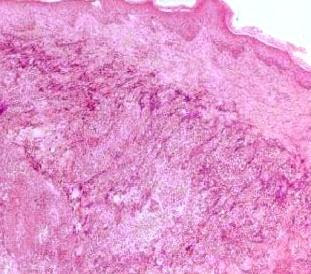Answer of Dermatopathology Case 17
Fordyce's Spot (Ectopic sebaceous glands) Visit: Fordyce's Spot ; Visit: Dermatopathology site Abstract: Treatment of Fordyce spots with CO2 laser.Dermatol Surg. 2003 Aug;29(8):869-71. BACKGROUND: Fordyce spots are heterotopic sebaceous glands that can be located at the lips' vermilion or the oral mucosa. Although this is considered a rathercommon disorder, a treatment for this condition that sometimes affects patientsfrom only a cosmetic viewpoint has not yet been described. OBJECTIVE: To evaluateCO2 superpulsed laser treatment in two subjects with Fordyce spots. METHODS: Two patients with papules and yellowish plaques at the upper lip corresponding to Fordyce spots were treated with coherent Ambulase CO2 superpulsed laser (CoherentMedical, Palo Alto, CA) ; after informed consent was obtained, two to three passeswere performed in one session using 2 and 4 W and a spot size of 2 mm. RESULTS:Complete re-epithelization was observed 2 weeks later with no residual Fordyce papu












